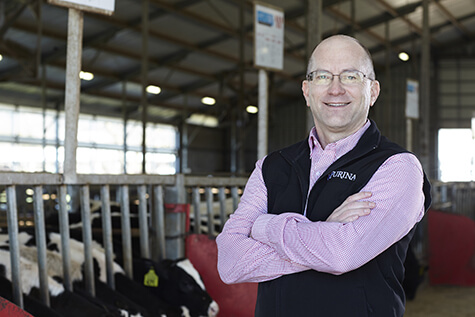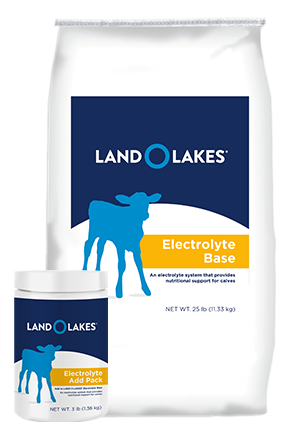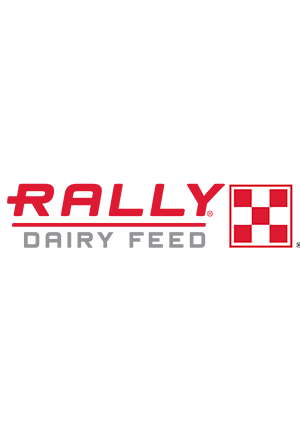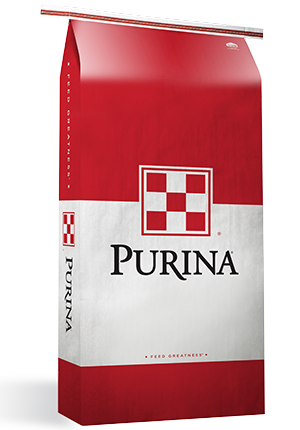
Dry Cow Heat Stress: The Lasting Effects
Cow : Heat Stress
You may use fans and sprinklers to keep the lactating herd cool, but what are you doing to alleviate dry cow heat stress? It may be costing you more than you think.
According to a National Animal Health Monitoring System (NAHMS) Dairy Study, 75.7 percent of all operations provide fans for the lactating herd, while just 47.7 percent provide fans for dry cows. Sprinklers are provided to the lactating herd on 25.2 percent of all operations, yet only 10.7 percent of dry cows are cooled with sprinklers.1
This data shows a gap in cow comfort for the dry cow. While the lactating herd receives special treatment, dry cows are too often forgotten. And, it’s an oversight that may be hurting your bottom line.
Effects of dry cow heat stress
Research from the University of Florida evaluated the effects of dry cow heat stress. From dry off until calving, cows were into two categories: heat stress (shade, no fans and no sprinklers) or cooling (shade, fans and sprinklers). Upon calving, all cows moved into a free stall barn with sprinklers and fans. The study ran until cows were 30 weeks into lactation.
The research showed:
If you have the opportunity and resources, consider adding sprinklers and fans for dry cows.
Dry cow nutrition can also help as heat and humidity rise. Use Purina® Rally® Dairy Feed early in the season to help support transition cow health and milk production throughout the year – regardless of weather. This patented technology supports intake and helps deliver the right type of energy to cows, even when during hot weather challenges.
Rally® Dairy Feed research has shown:
1USDA APHIS, Dairy 2014, Cow Management, 2014, pgs 176 to 178
2Heat stress abatement in dry cows: Does cooling improve transition success?, B. Amaral, Cool Cow Heat Abatement Seminar, 2013
3DC525 and DC537
4K. A. Davison, R. O. Rodrigues, J. A. Davidson, N. M. Barkley, A. L. Kenny, E. C. Adkins, and M. R. Waldron, University of Missouri, Columbia, Purina Animal Nutrition Center, Gray Summit, MO. Effects of a commercial feed additive on production losses during acute heat stress conditions in Holstein dairy cows. 2013 American Dairy Science Association Annual Meeting, Indianapolis, Ind.
5K. A. Davison, R. O. Rodrigues, J. A. Davidson, N. M. Barkley, A. L. Kenny, E. C. Adkins, and M. R. Waldron, University of Missouri, Columbia, Purina Animal Nutrition Center, Gray Summit, MO. Effects of a commercial feed additive on production losses during acute heat stress conditions in Holstein dairy cows. 2013 American Dairy Science Association Annual Meeting, Indianapolis, Ind.
According to a National Animal Health Monitoring System (NAHMS) Dairy Study, 75.7 percent of all operations provide fans for the lactating herd, while just 47.7 percent provide fans for dry cows. Sprinklers are provided to the lactating herd on 25.2 percent of all operations, yet only 10.7 percent of dry cows are cooled with sprinklers.1
This data shows a gap in cow comfort for the dry cow. While the lactating herd receives special treatment, dry cows are too often forgotten. And, it’s an oversight that may be hurting your bottom line.
Effects of dry cow heat stress
Research from the University of Florida evaluated the effects of dry cow heat stress. From dry off until calving, cows were into two categories: heat stress (shade, no fans and no sprinklers) or cooling (shade, fans and sprinklers). Upon calving, all cows moved into a free stall barn with sprinklers and fans. The study ran until cows were 30 weeks into lactation.The research showed:
- Calves born from heat-stressed cows weighed on average 17 pounds less.2
- Cows that experienced heat stress had a decreased ability to kill bacteria and fight off infections.
- Cows that experienced heat stress during the dry period produced an average of 14 pounds less milk in the first 30 weeks compared to cooled cows.
Support dry cows in summer
So, what can you do to minimize dry cow heat stress this summer?If you have the opportunity and resources, consider adding sprinklers and fans for dry cows.
Dry cow nutrition can also help as heat and humidity rise. Use Purina® Rally® Dairy Feed early in the season to help support transition cow health and milk production throughout the year – regardless of weather. This patented technology supports intake and helps deliver the right type of energy to cows, even when during hot weather challenges.
Rally® Dairy Feed research has shown:
- Increased DMI by 3.3 lbs3
- Increased milk production by 3.6 lbs4
- Improved feed efficiency
- Lowered non-esterified fatty acid (NEFA) postpartum3 and during lactation5
1USDA APHIS, Dairy 2014, Cow Management, 2014, pgs 176 to 178
2Heat stress abatement in dry cows: Does cooling improve transition success?, B. Amaral, Cool Cow Heat Abatement Seminar, 2013
3DC525 and DC537
4K. A. Davison, R. O. Rodrigues, J. A. Davidson, N. M. Barkley, A. L. Kenny, E. C. Adkins, and M. R. Waldron, University of Missouri, Columbia, Purina Animal Nutrition Center, Gray Summit, MO. Effects of a commercial feed additive on production losses during acute heat stress conditions in Holstein dairy cows. 2013 American Dairy Science Association Annual Meeting, Indianapolis, Ind.
5K. A. Davison, R. O. Rodrigues, J. A. Davidson, N. M. Barkley, A. L. Kenny, E. C. Adkins, and M. R. Waldron, University of Missouri, Columbia, Purina Animal Nutrition Center, Gray Summit, MO. Effects of a commercial feed additive on production losses during acute heat stress conditions in Holstein dairy cows. 2013 American Dairy Science Association Annual Meeting, Indianapolis, Ind.





